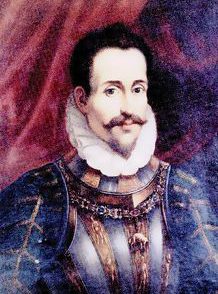Archives provide new information about Vasari corridor.
In the spring of 1565, work commenced on the construction of an elevated urban footpath that linked the Palazzo Vecchio to the Palazzo Pitti through the unfinished Uffizi in the centre of Florence. The order for this ambitious project had been issued by Duke Cosimo I de’ Medici. The most daunting aspect was not the proposed length of the project, or the fact that it would have to cross the Arno River, bypass the Mannelli Tower, then cut through the façade of the Santa Felicita Church. By far the greatest challenge was that it had to be completed in less than six months.
Cosimo prided himself on his ability to ‘hurry slowly’—by which he meant think deeply and decide quickly. Surely this time his festina lente approach would fail. Why had Cosimo set his architect and his builder such a demanding deadline? Why complete the passage while the Uffizi was still a construction site on the very side that linked up with the Palazzo Vecchio?
The answer can be found within the Medici Archives, in the reports of Tuscan negotiators in Austria as they arranged the final details of the marriage, scheduled for December 1565, that would strengthen Duke Cosimo’s ties to the House of Habsburg.
In order to highlight the significance of the wedding between Cosimo’s eldest son and Johanna von Habsburg—daughter of Emperor Ferdinando I and sister to the reigning Emperor Maximillian II—Cosimo had decided to present his son’s bride with the ‘mother’ of all wedding presents, a construction that would link the old and the new ducal power centres and pass through what was the Renaissance equivalent of a massive main-frame computer: the Uffizi.
Bartolomeu Concini writing from Innsbruck to Cosimo on October 17, 1565 describes how he had given the 17-year-old Johanna Habsburg the first symbolic trinkets in celebration of her forthcoming marriage:
I have already given Her Excellency the necklace of pearls and the diamond earrings…Today His Excellency the Prince [Francesco de’ Medici] offered her the medal with the Uffizi Palace on the reverse so that she may embrace the Corridor going from the Palazzo Vecchio to Pitti, which Your Excellency built at her bequest.
A Renaissance wedding was often an excuse for a street party in which lavish theatrical wooden constructions were erected to represent romantic castles or recreate significant and popular historical or mythical moments. These expensive extravagances were typically removed once the wedding celebrations were over. However, Cosimo’s elevated passageway was never intended to be a symbolic, temporary scaffolding to allow the married couple to make a quick procession from one palace to another. The intention of this project was always to create a permanent and awe-inspiring structure that would reflect the political strength and durability of Cosimo’s post Republican regime.
His passageway (it was never to be thought of as Johanna’s or even as Francesco’s), would allow the Duke to move without the need of a heavily armed bodyguard between the three centres of political power. His citizens would never be sure when he was looking down on them as they went about their daily business on the overcrowded market street that crossed the River Arno.
The 750-metre elevated walkway (a kilometre if the Uffizi section is included), has continued to impress all who have walked under its shadow and inspire wonder for those fortunate enough to make the enclosed journey from Palazzo Vecchio to the gardens of the Pitti. Despite floods, war and a terrorist bombing, the structure now known as the Vasari Corridor remains essentially as it was first conceived. The only major alteration was carried out on the orders of Mussolini, when panoramic windows were installed in the corridor over the central arch of the Ponte Vecchio to provide Adolf Hitler with a spectacular view on his brief visit to Florence in 1938.
It is doubtful that Cosimo would be pleased to learn that the gift he ordered for his daughter-in-law now carries the name of the architect-artist who designed it, rather than the man who forked out the 11,000 scudos required to complete the epic structure in time for his son’s wedding.
The translation of the Concini letter and background historical information was provided by research fellow Francesca Funis of the Medici Archive Project. Mike Samuda writes the commentary.





